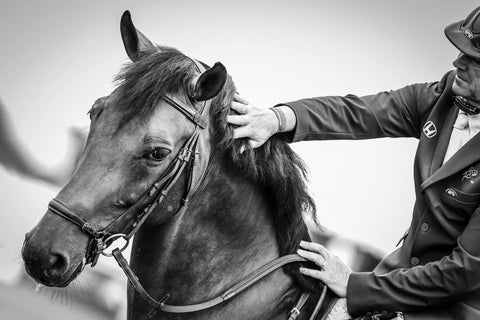How to Structure a 20-Minute Lunging Session For Your Horse

As most of us are shortening our time spent at the yard, we sometimes want to condense a workout session into only 15 or 20 minutes.
If you’re lunging instead of riding once a week or so, this short amount of time can be really beneficial for strengthening and suppling your horse, as well as building fitness.
In fact, lunging sessions shouldn’t typically exceed 15-20 minutes anyway, as it can cause strain on the horse’s joints, particularly if you are working in a small circle for the majority of that time.
To make sure that your precious time isn’t wasted, here’s how to structure a lunging session for your horse which maximizes fitness benefits…

0-5 Mins
Your first five minutes should always be spent allowing the horse to warm up in walk without any lunging aids attached.
Make sure to walk on both sides and allow the horse to stretch and loosen up. Try and keep the walk active but not rushed and encourage the horse to use his topline as much as possible.
After five minutes of walk, you can then attach side reins or another lunging aid if you are using one.

5-10 Mins
Depending on your goals for the session and whether your horse benefits more from going into trot or canter after walk, you could pick either pace next for another five minutes.
Many horses show a looser and more cadenced trot after a canter, but some horses need to keep things very quiet and controlled on the lunge and are best left to trot until settled and rhythmical.
Keep your lunging aid fairly loose and your circle large to allow the horse to stretch and work over his back in a longer, lower frame.
10-15 Mins
Now that your horse has spent ten minutes loosening up, you can do 5 to 7 minutes of more advanced work.
If you’re using side reins or similar, this would be the time to make them slightly shorter and encourage a more uphill frame and more compression of the body.
Be careful not to over tighten any lunging aids, as you want to avoid tying the horse’s head down. Instead, the focus should be on encouraging the horse to engage the back and work over the topline.
During this time, there are quite a few exercises you can do to make sure that your horse benefits from the lunge session:
- Spiral the circle in and out at trot and canter to help improve balance and strength. Depending on your horse’s level of schooling and strength, you could go up to a 5m circle then back out to 20 or 30m.
- Practice transitions between the paces, both direct and indirect, to allow the horse to balance himself and activate the hind leg
- Transitions within the paces between working and lengthened paces
- To add variety to your lunging sessions, you can also add walk, trot, and canter poles to help develop cadence in the paces, as well as improve muscle tone, fitness, and agility
- You could also look at lunging outside or up and down hills to improve your horse’s surefootedness and improve their balance and self-carriage.

15-20 Mins
After your horse has done his work, you can take any lunging aids off and spend a few minutes allowing the horse to stretch and cool down with a short stretchy trot and the remainder of the time in walk.
You will want to do this until the horse’s heartrate has slowed and his body temperature has normalised.
If you are able to, you could do the walk cool down or warm up in hand instead of on the lunge.
This would allow you to work in a larger space, limit the time spent on a small circle, and even do some small steps of leg yield or other lateral work to encourage suppling of the body.
_____
Original text by Sophie Baker / FEI




